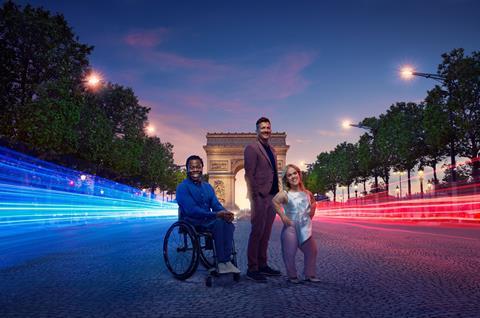Anne-Marie McShane, director, EMEA sports & sponsorship lead at EssenceMediacom, looks at how social media is key to promoting the Games

Just as important as someone doing something great, is that people see them doing it.
The Paris 2024 Olympics set a benchmark for engaging new audiences across new channels. With a remarkable 2,000% increase in TikTok Games compared to Tokyo, alongside 233,000 individuals using the Olympics hashtag, we’re seeing a seismic shift in how these events are consumed and celebrated.
It’s important to remember that it’s not just about numbers: it’s the stories, moments and controversies that captivated millions, from Turkey’s ‘shooter dad’ Yusuf Dikec to the debates around breakdancing as a new sport.
Broadcasters like Warner Bros. Discovery (WBD) capitalised on these trends, witnessing more than 4.5 billion video views of its posts on social media, a staggering tenfold increase from Tokyo 2020 and quadruple the engagement seen in Beijing Winter Olympics 2022 and Tokyo combined.
Eurosport’s digital strategy furthers this 360 degrees, always-on, multi-screen experience designed to super-serve the modern-day sports fan’s second and third-screen habits. Through a dedicated Olympics Hub, the broadcaster offered a myriad of video formats, including game highlights, exclusive interviews and insights across social platforms. This helped provide a comprehensive catalogue of engaging Olympics content that was accessible throughout every day of the competition.
As we enter the highly-anticipated Paralympic Games, there’s an unparalleled opportunity for broadcasters to redefine sports coverage. By strategically leveraging social media, influencers and content creators, they can take the learnings from the Olympics to the next level to connect with new sporting audiences.
Viral victory: the social media revolution in broadcast
Paris 2024 saw athletes adeptly using platforms like TikTok to share their journeys, garnering substantial followings and securing brand partnerships. Sports stars like Ilona Maher became social media sensations, leveraging their online presence for advocacy, and broadening their impact beyond the arena. Particularly for niche sports without traditional sponsorship, social media has become a critical revenue source.
When it comes to the Paralympics, there’s a learning here on utilising a multi-platform strategy to revolutionise how stories are told, making the coverage engaging and accessible. We’re already seeing steps towards this with Channel 4’s yearly social campaigns around the competition.
This year, its campaign film has been utilised across physical and social advertising to challenge patronising attitudes around the athletes. By showing the reactions of people watching the sports, the broadcaster is highlighting misguided approaches which don’t recognise the Paralympians as what they are - world-class athletes.
More broadcasters should take note of the power of social for advocacy, impact and attention around these games and beyond.
TikTok marathon: running for views
Advocacy and attention are powerful across all platforms, but when it comes to the Paralympics, TikTok has been pivotal. The platform’s strategic partnerships with the International Olympic Committee (IOC), the International Paralympic Committee (IPC), Team GB and Paralympics GB have amplified the games’ visibility and also introduced innovative ways to engage with audiences through social content.
For the Olympics, TikTok worked closely with broadcasters such as the BBC and Eurosport to incorporate daily content into their traditional broadcasts, seamlessly blending digital with traditional media.
Channel 4’s collaboration with TikTok for the Paralympics exemplifies how to engage a new generation with the games. Through 4Studio, it has created a customised Paralympic Games digital experience, featuring daily TikTok videos of medal winning moments, Paralympian profiles and behind the scenes moments from the Game’s venues.
Assembling a presenter team of high-profile content creators like comedian Fat Timbo, former rugby player Jodie Ounsley and Paralympian Milly Pickles, the channel is aiming to amplify the coverage of the games on the social media platform, bringing the extraordinary stories of Paralympians to a wider audience.
This also highlights the importance of collaborating with influencers and content creators to weave compelling narratives that resonate on a broader scale, driving engagement and additional opportunities through visibility and brand partnerships.
Aiming for authenticity and interactivity
The success of user-generated content campaigns during the Olympics, such as the viral #ChocolateMuffinTok trend, highlights the potential of interactive content to enhance viewer engagement. For the Paralympics, similar campaigns can foster a sense of community among viewers, allowing fans to feel directly connected to the event. By leveraging hashtags, challenges, and competitions, broadcasters can create a buzz around the Paralympics, encouraging active participation and engagement across social.
However, the integrity of this content is paramount. Influencers must be aligned with the Paralympic ethos to ensure that their contributions enrich the event’s broadcast coverage rather than detract from it. Content should be crafted with the utmost sensitivity and respect, celebrating athletes’ achievements without resorting to stereotypes or exploitation.
The success of social media strategies during the Olympics signals a promising avenue for the Paralympics, responding to audiences’ growing demand for more personalised and interactive content. This approach not only enhances the viewer experience but also reflects the inclusive spirit of the Paralympics, showcasing the extraordinary capabilities of its athletes.

Anne-Marie McShane is director, EMEA sports & sponsorship lead at EssenceMediacom





No comments yet